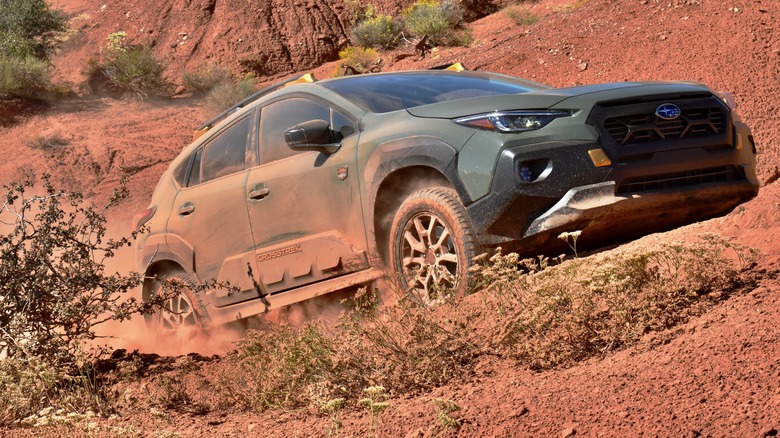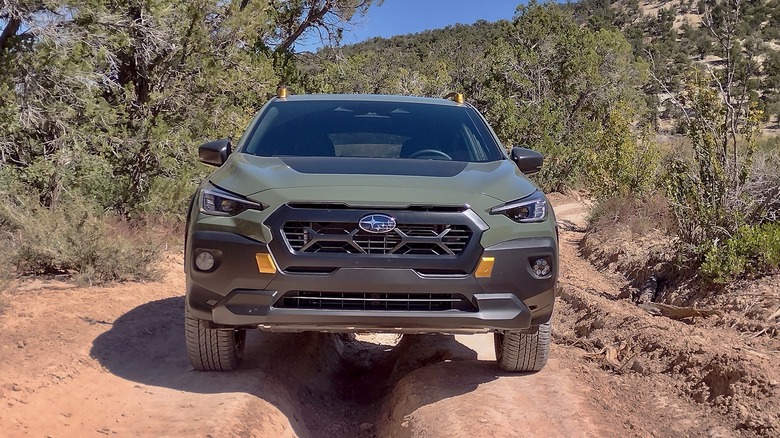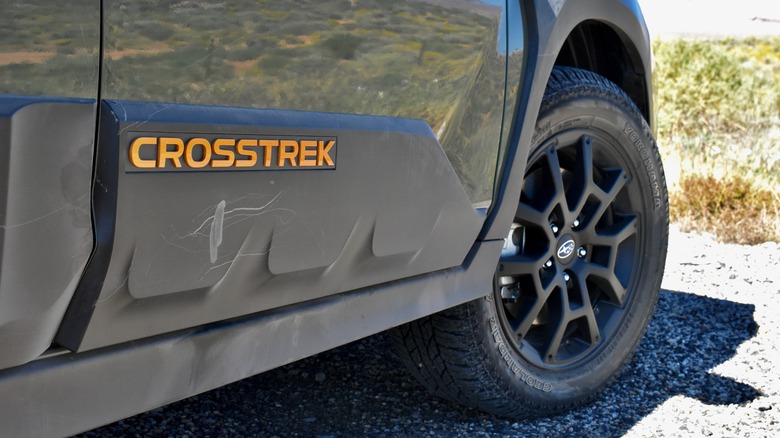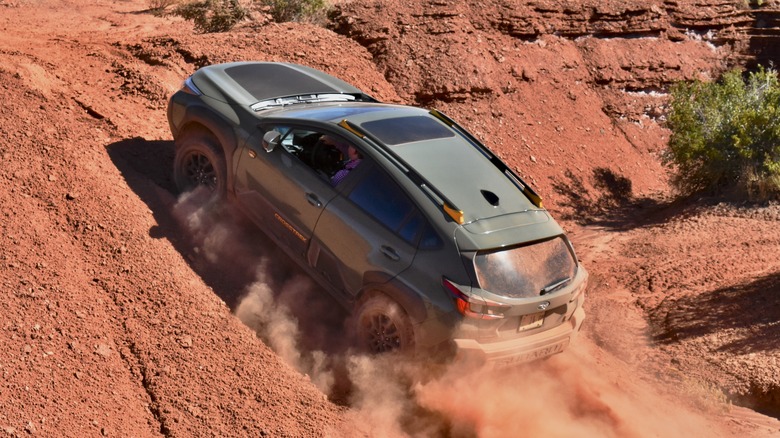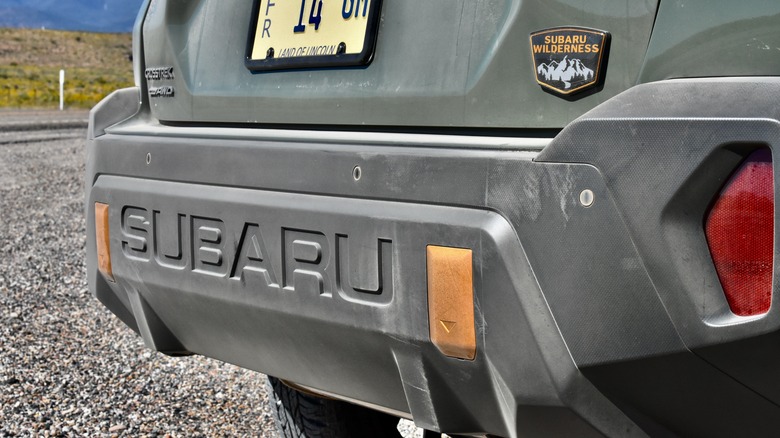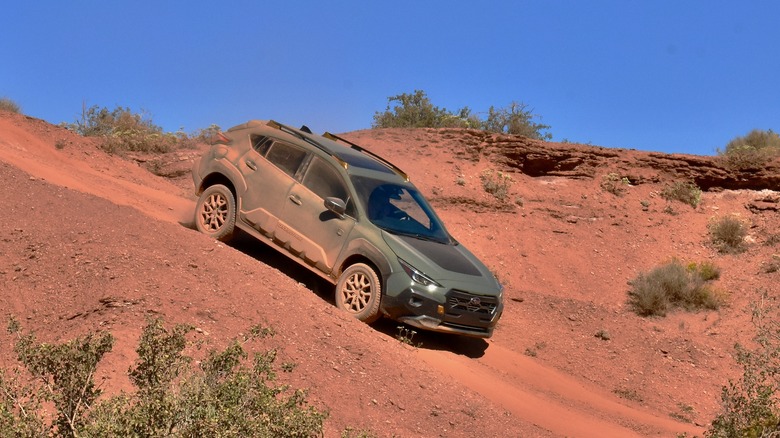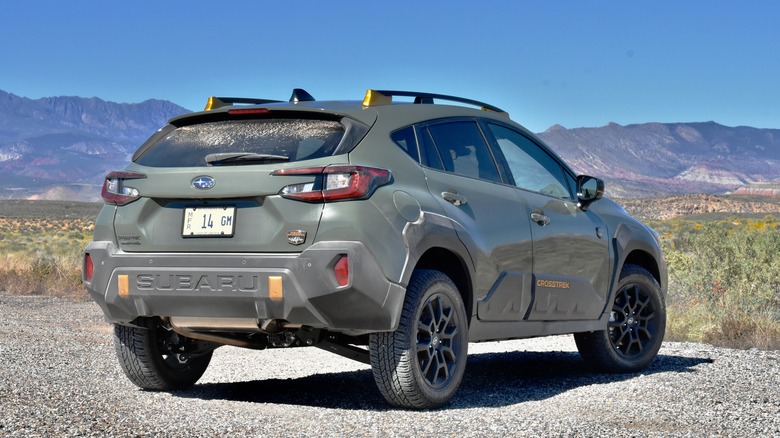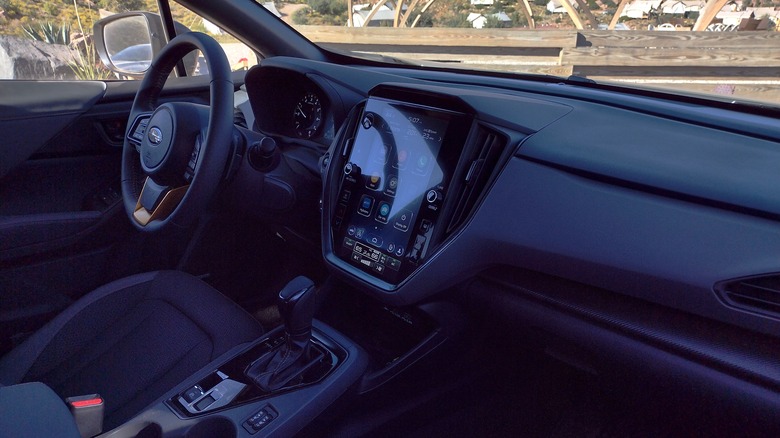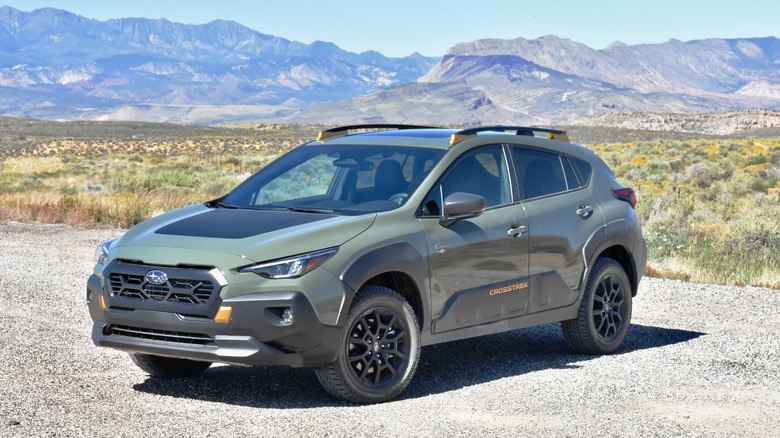2024 Subaru Crosstrek Wilderness First Drive: Part Hatchback, Part SUV, All Subaru
Most automakers replace their small hatchbacks with crossover SUVs, but with the 2024 Crosstrek Wilderness, Subaru has imbued one of those hatchbacks with the same off-road capability and rugged styling.
Like the natural wonders Subaru's marketing department says customers will use it to explore, the Crosstrek Wilderness came about through a slow and deliberate process. Subaru made a name for itself as one of the first automakers to sell all-wheel drive cars, giving it a rough-and-ready character expressed in sturdy wagons like the Outback. In 2013, Subaru applied a similar formula to a smaller vehicle with the Crosstrek, giving the Impreza hatchback a suspension lift and some plastic body cladding.
Now in its third generation, the Crosstrek has become a strong competitor to the smaller crossovers despite its obvious hatchback DNA. But Subaru isn't stopping there. As part of the 2024-model-year redesign that ushered in the third-generation Crosstrek, Subaru is giving this model the Wilderness treatment previously applied to the Outback and Forester. That means enhanced off-road capability and even more plastic body cladding. These changes move the Crosstrek Wilderness even further away from its Impreza roots, and bring it closer to being a true SUV.
Hatchback for the apocalypse
The Crosstrek Wilderness looks like it could star in a post-apocalyptic movie, but one where the automaker providing the cars is also a sponsor, so they have to look recognizable.
The basic lines of the standard Crosstrek and related Impreza (which also gets redesigned for 2024) remain, but the Wilderness model has a completely different character. Thanks to a new grille composed of X-shaped elements, the car appears to be sneering at you. A black anti-glare decal gives the hood more form. And while it's still fairly small, the puffed-up look of the Wilderness-specific front and rear bumpers give it more visual presence. The embossed "Subaru" lettering on the rear bumper is something we'd normally expect to see on the tailgate of a pickup truck.
All of this works well enough, but the side treatment is a bit questionable. The Wilderness has unpainted fender flares like a standard Crosstrek, but Subaru also added big slabs of plastic cladding for the doors. These pieces are an odd shape that doesn't match up with the rest of the bodywork. The "Crosstrek" lettering on the front doors also appears to have been placed there not because of any aesthetic reason, but because it's the only spot where it would fit.
Not just for show
Subaru didn't just make the Crosstrek look tougher, though. The new front and rear fascia designs have scalloping at their corners that should help avoid scraping when driving at odd angles. The most-exposed parts are also separate pieces that, Subaru claims, are easy to replace if damaged. It should be less of a problem than replacing an entire front or rear bumper, at least.
The Crosstrek also gets an aluminum skid plate to protect the engine, rides on all-terrain tires (something many owners were already fitting to their Crosstreks, according to Subaru), and gets a suspension lift courtesy of taller springs and dampers. This gives the Crosstrek Wilderness 9.3 inches of ground clearance. That's 0.6 inch more than the standard Crosstrek, which already matched the Jeep Cherokee Trailhawk.
Looking at the other important off-road measurements, the approach angle increases from 18.0 degrees to 20.0 degrees, the departure angle increases from 30.1 degrees to 33 degrees, and the breakover angle increases from 30.1 to 33.0 degrees.
Small mechanical changes
The Crosstrek Wilderness is only available with the larger of the two engines offered in the Crosstrek lineup. The 2.5-liter boxer-four generates the same 182 horsepower and 178 pound-feet of torque as in other Crosstrek models. And as in those other models, it's connected to a continuously variable transmission (CVT) and all-wheel drive system.
For the Wilderness, however, Subaru changed the final drive ratio from 3.7 to 4.1. That, combined with a second primary pressure sensor for the transmission, helps better control engine torque at low speeds, according to Subaru. That's very important because, on loose and slippery surfaces, precise control of wheel speed can mean the difference between reaching your destination and getting stuck.
Like other rugged Subarus, the Crosstrek Wilderness also gets an X-Mode drive mode, with Snow/Dirt and Deep Snow/Mud settings. X-Mode also automatically activates the standard hill descent control, which walks the car down steep hills at a set speed. That's all very good but, instead of including a simple button, Subaru requires drivers to dig into the touchscreen's menus to activate X-Mode.
Yes, it can really go off-road—to a point
Subaru isn't overselling things by calling this Crosstrek the Wilderness. It really can get you surprisingly far into nature. The route for the Crosstrek Wilderness media drive program took us on unmaintained roads composed mainly of sand, which the Crosstrek handled easily in its Deep Snow/Mud X-Mode setting. This allows more wheelspin, helping to maintain crucial forward momentum and making the most of the relatively weak engine. The extra ground clearance also came in handy, allowing the Crosstrek to traverse some fairly deeply-rutted sections.
Subaru also prepared a short off-road course with many steep inclines and loose surfaces that made scrambling to the top a challenge. It's not every day that you are obligated to floor the throttle, but in the Crosstrek Wilderness that's exactly what you need to do to get up a steep hill. While this was tons of fun, we suspect a more traditional off-roader wouldn't have worked as hard to do the same things. And while the Crosstrek's small size was an asset, its steeply-raked windshield and long hood limited forward vision in some instances.
Subaru doesn't want the Crosstrek Wilderness to be a Jeep Wrangler or Ford Bronco rival, though. As Garrick Goh, the car line planning manager for the Crosstrek Wilderness, put it in a presentation ahead of our drive, Subaru's brand of off-roading is about "experiencing nature," not "conquering nature." That translates to enough capability for reaching remote hiking trails and camp sites, without worrying about the more technical trails that come to mind when one thinks of traditional off-roading.
Expect compromises, but not too many
Even in the conditions where Subaru expects customers to use the Crosstrek Wilderness, we still noticed some shortcomings. The shocks do have a longer travel stroke than in the standard Crosstrek, but overall suspension travel and articulation are fairly limited by off-road-vehicle standards. So while the Wilderness can handle sand, rocks and other obstacles could prove more challenging.
Whether on dirt or pavement, the Crosstrek Wilderness also isn't particularly comfortable. We drove through a few washboard sections that cause a spectacular amount of bouncing and vibration, which perhaps wouldn't be the case in a larger-tired traditional off-roader like a Wrangler or Bronco.
The Crosstrek Wilderness was much nicer to drive on the road than either the Jeep or the Ford, but that's to be expected given its car-based construction. The Wilderness wasn't exactly pleasant to drive on pavement, either. Ride quality was suboptimal on all but the smoothest stretches of road, the steering feels lackadaisical, and even with the 2.5-liter engine, the Crosstrek Wilderness is downright slow. Getting up to highway speeds was a chore, although once we got there cabin noise was fairly low.
Still, the Crosstrek Wilderness drives much more like a normal car than a traditional off-roader, and even surpasses the larger Kia Sportage X-Pro in refinement. Unlike in the Subaru, all-terrain tires significantly degraded the Kia's road manners.
Added utility
It may still be a small car, but the Crosstrek Wilderness offers impressive utility. Thanks to a transmission cooler, it can tow up to 3,500 pounds. That's enough to make towing a practical option, something it really isn't in the standard Crosstrek.
A Subaru always looks right with a roof rack (they're even included in early design sketches, according to the automaker) but the Crosstrek Wilderness gets an upgrade. Its ladder-type roof rack has a 176-pound dynamic and 700-pound static load limit, allowing for the use of rooftop tents. A relatively low roof height should make getting in and out of said tent easier than in a traditional SUV, too.
The Crosstrek's 19.9 cubic feet of cargo space with its rear seats in place, and 54.7 cubic feet with the rear seats folded, is more than some subcompact crossovers—including the equally outdoorsy Jeep Renegade—but still mid-pack. It's definitely reasonable for a vehicle of this size, though.
Plain but functional interior
The Crosstrek Wilderness has about all of the creature comforts you can get in a Crosstrek, including standard heated front seats and an available power moonroof and 10-speaker Harman Kardon audio system. The standard StarTex synthetic leather upholstery is both water resistant and vegan, Subaru points out. Another functional touch is the black headliner, which Subaru notes hides scuffs from cargo. The liftgate also has an LED that should come in handy when unpacking your tent at night.
In true Subaru fashion, the interior doesn't set any standards for design, but looks like it will stand up to the rigors of an active lifestyle. A splash of what Subaru calls "anodized copper" trim (it looks more like gold), matching bits on the exterior, gets lost in the otherwise black interior. But we didn't think twice about hopping in with dirty hiking shoes.
An 11.6-inch portrait-oriented touchscreen with wireless Apple CarPlay and Android Auto is standard as well—with full-screen display for both. Large icons are easy to use, but are graphically reminiscent of an ATM menu. While large screens are obligatory in new cars—in this is one is generously proportioned for this price point—they aren't always necessary. In this case, the lower part of the screen is filled with climate controls that could have just been physical buttons.
Another reason for fans to love Subaru
The 2024 Crosstrek Wilderness sits at the top of the lineup, but only by a bit. With a base price of $33,290 (including destination) it costs just $1,100 more than the next-highest Crosstrek Limited. A single option package adds the moonroof, Harman Kardon audio system, and a power driver's seat for $2,270, keeping the all-in price comfortably below $40,000.
That makes a Crosstrek Wilderness much cheaper than the most off-road-capable versions of the similarly sized Jeep Compass, Jeep Renegade, and Ford Bronco Sport. Buyers who don't need all of that capability and look at lower trim levels won't see the Subaru as such a big bargain, though. And while it is impressive off-road, the Crosstrek's uninspiring on-road driving dynamics might not win them over.
As a hatchback that's evolved into a dirt-slinging SUV analog, the Crosstrek Wilderness doesn't make much sense when compared to more conventional crossovers from other brands. That's because it's mostly about giving Subaru fans more of what they want. It has Subaru's trademark boxer engine and all-wheel drive, but can now get owners further into nature. It's also priced in a way that will make customers think long and hard about upgrading from other Crosstrek trim levels. And, in the best Subaru tradition, its combination of a hatchback body and tough SUV styling is delightfully quirky. The Crosstrek Wilderness is more proof that Subaru knows its audience.
